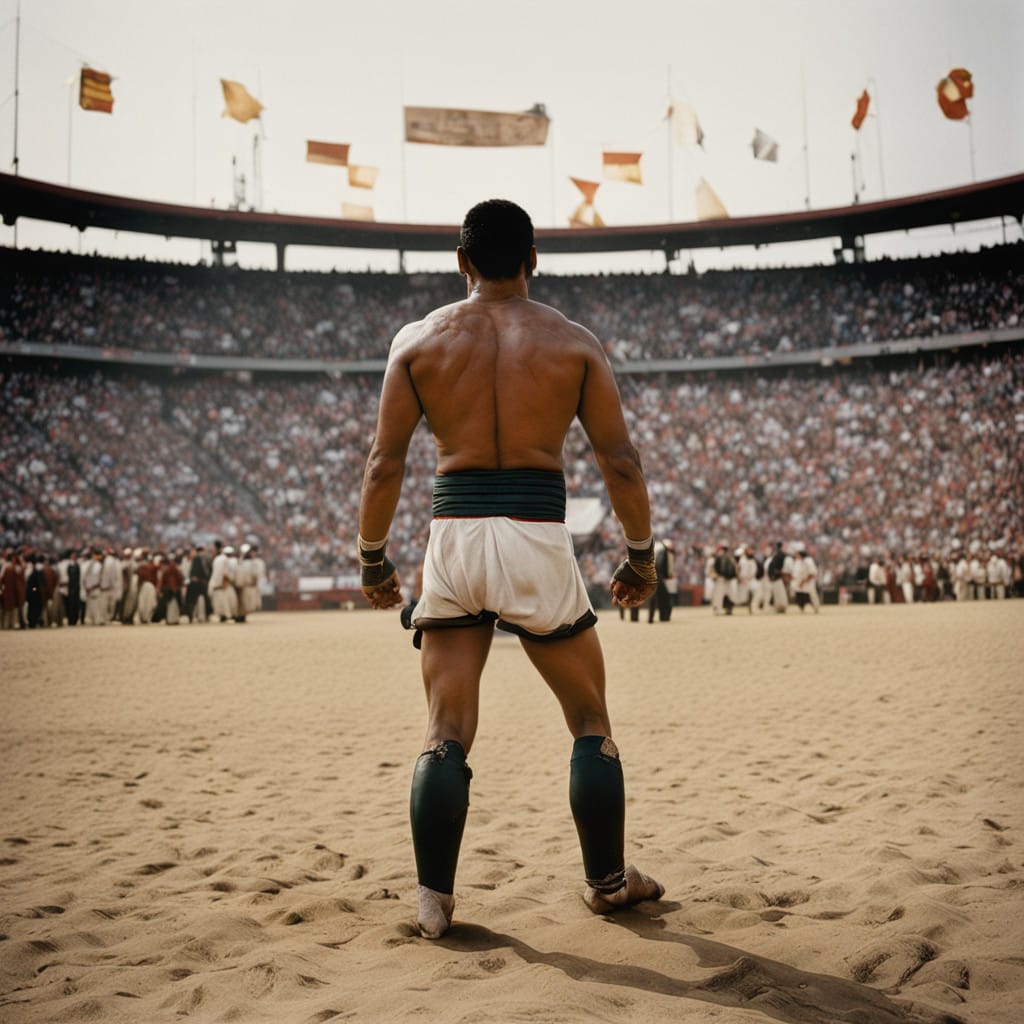
The Rich Tradition of Mongolian Wrestling
Mongolian Wrestling, known as bökh in the native language, stands as one of Mongolia’s most cherished traditions. It is celebrated not only as a sport but also as a cultural cornerstone deeply embedded in the nation’s identity. The sport’s history spans over two millennia, reflecting the nomadic lifestyle and warrior ethos of the Mongolian people. Recognized for its unique rules, attire, and ceremonies, Mongolian Wrestling captivates audiences globally. This article delves into its origin, historical evolution, global popularity, amateur practices, professional leagues, societal significance, and rules.
Origins and Historical Evolution
The roots of Mongolian Wrestling trace back to the ancient nomadic tribes of Central Asia. Historical texts, including the “Secret History of the Mongols,” detail wrestling matches held during the era of Genghis Khan. These matches were designed to build strength, endurance, and discipline among warriors. Wrestling contests were central to festivals and celebrations, symbolizing power and unity.
Mongolian Wrestling gained prominence during the Mongol Empire (1206-1368). Emperors used the sport to train soldiers, ensuring they were physically prepared for warfare. Wrestling tournaments were often grand affairs, involving thousands of participants. The tradition persisted through centuries, surviving even under foreign rule. It continued to evolve, integrating regional styles and customs while retaining its core principles.
Today, the sport remains a vital part of Mongolia’s cultural heritage. Annual festivals, such as Naadam, prominently feature wrestling alongside archery and horse racing. These events showcase the enduring legacy of bökh and its role in preserving Mongolian traditions.
Global Popularity and Where It’s Played
While Mongolian Wrestling is deeply rooted in its homeland, its influence has spread across borders. The global interest in traditional martial arts has brought the sport to international attention. Cultural exchange programs, documentaries, and sporting events have introduced bökh to diverse audiences.
Countries with significant Mongolian populations, such as China, South Korea, and Russia, host wrestling competitions inspired by Mongolian traditions. These events often coincide with cultural festivals, fostering community ties. Moreover, Mongolia’s success in international wrestling competitions has boosted the sport’s visibility.
In recent years, Mongolian Wrestling has gained a foothold in Western countries. Martial arts enthusiasts and cultural organizations have embraced the sport, hosting workshops and exhibitions. Its unique blend of strength, technique, and tradition appeals to a wide range of participants and spectators.
Amateur Mongolian Wrestling: Youth and Schools
Amateur Mongolian Wrestling serves as a foundation for nurturing talent and preserving the sport’s legacy. Young wrestlers often begin training in local clubs or schools, learning basic techniques and building physical fitness. Coaches emphasize discipline, respect, and cultural appreciation alongside athletic development.
Youth tournaments provide opportunities for young wrestlers to showcase their skills. These events are often community-driven, with families and neighbors gathering to support participants. Schools in Mongolia incorporate wrestling into their physical education programs, ensuring widespread access to the sport.
Internationally, amateur Mongolian Wrestling has gained traction through cultural exchange initiatives. Workshops and youth camps introduce the sport to children in other countries, promoting cross-cultural understanding. These efforts have sparked interest in preserving traditional wrestling styles and fostering global connections.
Professional Leagues and Organizations
Professional Mongolian Wrestling is organized through a hierarchy of leagues and associations. In Mongolia, the National Wrestling Federation oversees the sport, ensuring adherence to traditional rules and standards. Professional wrestlers, known as zürkhai, achieve legendary status within their communities, often earning titles such as “Falcon” or “Lion.”
The Naadam Festival represents the pinnacle of professional Mongolian Wrestling. This national event attracts elite competitors who vie for glory in front of thousands of spectators. Winning at Naadam is considered a crowning achievement, elevating wrestlers to celebrity status.
Beyond Mongolia, professional leagues have emerged in countries with strong wrestling traditions. Collaborations between international wrestling organizations and Mongolian associations have led to joint tournaments. These events blend traditional elements with modern competition formats, appealing to a broader audience.
Political and Social Significance
Mongolian Wrestling holds profound political and social significance. Historically, it symbolized unity and strength, qualities essential for survival in the harsh steppes. Leaders used the sport to rally their people, instilling pride and resilience.
In contemporary Mongolia, wrestling remains a unifying force. National holidays and festivals centered around the sport reinforce cultural identity and community bonds. Wrestlers often serve as role models, embodying the values of discipline, perseverance, and respect.
The sport also reflects Mongolia’s evolving relationship with the world. Through international competitions and cultural exchanges, wrestling serves as a bridge between Mongolia and other nations. It highlights the country’s rich heritage while fostering mutual appreciation and understanding.
Rules of Mongolian Wrestling
The rules of Mongolian Wrestling set it apart from other wrestling styles. Matches take place outdoors, often on grassy fields, adding a natural element to the competition. Wrestlers wear traditional attire, including a short-sleeved jacket (zodog) and snug shorts (shuudag).
The objective is simple: force the opponent to touch the ground with any body part other than their feet. There are no weight classes, allowing competitors of different sizes to face each other. Matches have no time limits, testing endurance and strategy.
Before each match, wrestlers perform a ceremonial dance called the eagle dance. This ritual symbolizes strength and freedom, paying homage to Mongolia’s nomadic heritage. Matches are overseen by judges who ensure fair play and adherence to rules.
Victory ceremonies are equally significant. Winners receive titles based on their performance, reflecting their skill and determination. These titles often carry great prestige, enhancing the wrestler’s social status.
Conclusion
Mongolian Wrestling is more than just a sport; it is a living testament to Mongolia’s history, culture, and values. Its origins in ancient warrior traditions, coupled with its enduring popularity, underscore its importance. Whether through amateur programs, professional leagues, or cultural exchanges, the sport continues to inspire and connect people worldwide. By embracing its rich heritage and sharing it with the world, Mongolian Wrestling ensures its legacy endures for generations to come.




